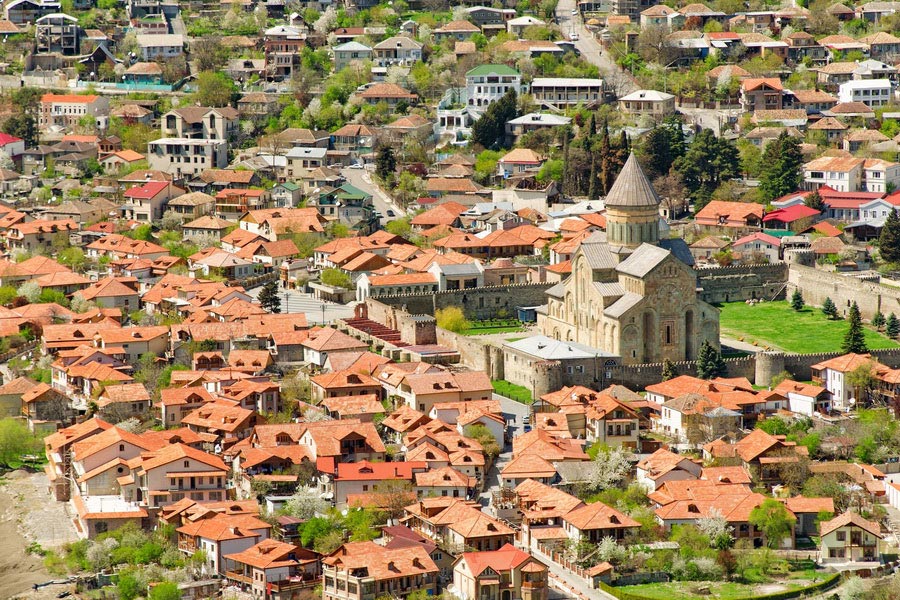Things to Do and Sightseeing Tours in Mtskheta
Mtskheta is Georgia’s most sacred pilgrimage city and has been declared a UNESCO World Heritage Site. Mtskheta is located just 20 km north of Tbilisi in the region of Mtskheta-Mtianeti. The town of approximately 8000 people is one of Georgia’s top destinations. Mtskheta is home to the many of the best examples of Orthodox Christian architecture and religious heritage found in Georgia.
The ancient history of Mtskheta is fascinating and detailed. The city was founded in the 5th century BCE by indigenous Meskhian tribes thought to have originally emigrated from Anatolia. Legend has it that the city was named after legendary ruler Mtsekhotos, son of the first king of Kartli.
Mtskheta is reputed to be a center of pagan cult worship in pre-Christian times. Georgian mythology recounts tales of enormous monoliths of Armazi - chief of the gods, and other deities towering over the city. One such fable claims that both Armazi and Zaden’s statues were destroyed by the prayers of patron St. Nino.
Mtskheta served as the capital of Iberia (Eastern Georgia) for over 700 years until King Dachi named Tbilisi the new capital city. Christianity attained the status of state religion of the Kingdom of Iberia in Mtskheta in 337 CE. The city still serves as the headquarters of the Georgian Orthodox Church and residence of the Patriarch.
Orthodox architecture dominates the scenery in Mtskheta with sacred shrines, chapels, churches and cathedrals in all directions. Much of the original infrastructure has been maintained to a high degree of authenticity and structural provenance.
Mtskheta is nestled in a broad depression on the banks of the Aragvi and Kura rivers which converge into a vibrant hue of rusty orange. The surrounding territory is semi-arid with sweeping slopes and rolling hills ringed by rugged mountain ridges. Georgian villas dot the earth tone hillsides in the perimeter. Mtskheta has become one of the more exclusive sub-urban enclaves of the Tbilisi metro area... It is known among locals for its surreal beauty and mild climate which can be enjoyed year round.
Cultural Attractions
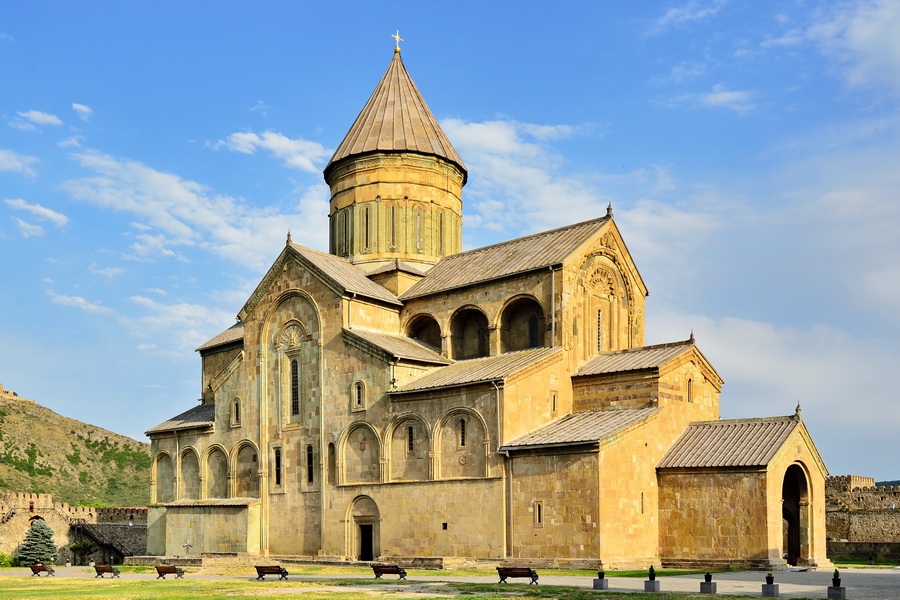
Jvari Monastery
Perched on a hill high above Mtskheta is the beloved monastic temple of Jvari which is Georgian for “cross”. Jvari is said to be the site where St. Nino planted the sacred cross to symbolize Georgia’s acceptance of Christianity in the 4th century CE. The site is thought to have been used as a place of worship in pre-Christian times where pagan cults gathered in adoration of nature. The tradition of Natvris Xe still takes place on a windy slope near Jvari where patrons fasten ribbons to the Tree of Wishes in the hope that their wishes will be granted.
The Temple of the Sacred Cross monastery referred to as Big Jvari was built around 600 CE and has since drawn Christian pilgrims from across the region. Jvari is one of the primary places of gathering for Georgian Orthodox Christian celebrations during New Year and Easter.
The architectural structure of the church is what is known a tetra conch having a rotunda center with four niche wings to symbolize the shape of a cross. Relief sculptures with Greek and Persian influences are featured on the external edifice of the building. The stark interior is dominated by a life size wooden cross. Sparse worn pieces of ancient mosaic still adhere to the inside walls. In the center of the church, the original foundation to which the Sacred Cross of Nino was once affixed is exposed. The ruins of a small temple known as Little Jvari stand adjacent to the main church.
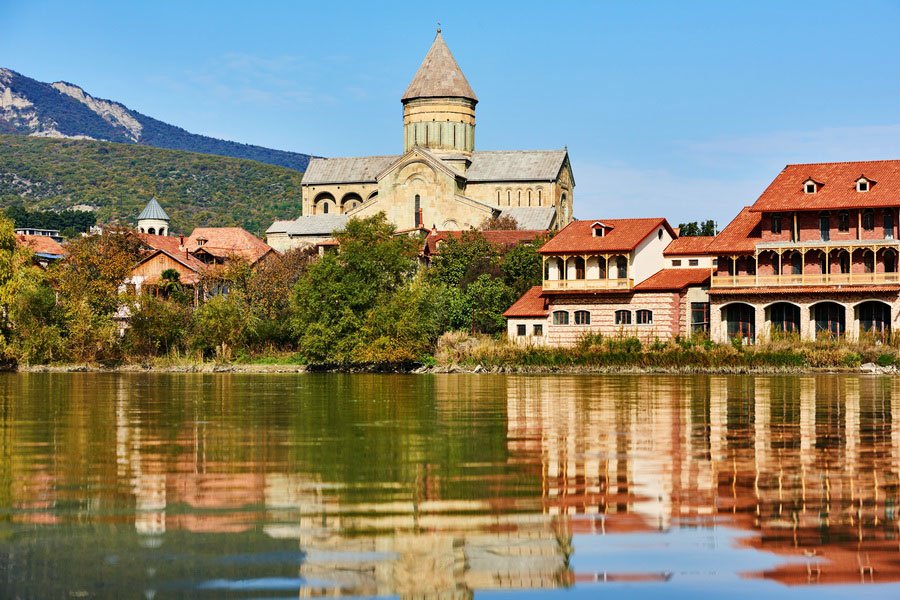
Svetitskhoveli Cathedral
Another proud monument of Christian Georgia is Svetitskhoveli Cathedral. It was built on the site of the demolished 4th century Twelve Apostles Church.
Religious legend connected with the church’s origins says that Elioz, a citizen of Mtskheta, found the Tunic of Christ in Jerusalem. Elioz's sister Sidonia died when she touched the tunic. She was wrapped and buried in it. A cedar of Lebanon grew on Sidonia's grave but the ruler Mirian decided to build a temple there and the cedar was cut down. Seven columns were carved from the tree. Six columns were put in place but the seventh began hovering in mid-air. The Patron Saint Nino of Georgia prayed all night until the column began excreting holy ointment. The miraculous chrism cured patients of severe illness - hence the name Svetitskhoveli which means “the Life-Giving Pillar”. One of the greatest religious holidays in Georgia is Mtskhetoba-Svetitskhovloba which is dedicated to the Life-Giving Pillar and the Tunic of Christ. It is marked twice annually on July 13th and October 14th.
In the 11th century, Melkhisedek began building a new patriarchal temple on the place of the old church. Svetitskhoveli has been destroyed and restored a number of times nevertheless retaining its original noble shape and design.
Svetitskhoveli is a grandiose cathedral of tetraconch design. The side altars are decorated with arched reliefs which symmetrically depart from the high cross-shaped facade from two sides. The temple facades are decorated with stone carving characteristic of Georgian architecture of the late 10th and 11th centuries. The arches which frame the windows have carved reliefs with figures of flying angels made from fragments of the previous temple. Interior frescos depict scenes from the legend of the Tunic of Christ. Under the main arch is the Life Giving Pillar.
Throughout the middle ages until now, Mtskheta has remained the heart of Georgian religious culture. Traditionally, all major church ceremonies, including the enthronement of the Patriarch, are held in Svetitskhoveli Temple.
Samtavro Convent
Also in Mtskheta is the active convent Samtavro in which the ruler Mirian and his wife Nana, the first to accept Christianity from St. Nino in 337, are buried.
The existing convent was built in 1820.Originally a 4th century wooden church erected by King Mirian, its dome and some of the structure was reconstructed after an earthquake in the 13th century. The three-storied bell tower was added in the 15th century. The frescos date to the16th and 17th centuries.
In the church yard lies the grave of St. Gabriel, one of Georgia’s most esteemed saints. The monument to King Mirian and Queen Nana was built in the convent in 1906.
Vicinities
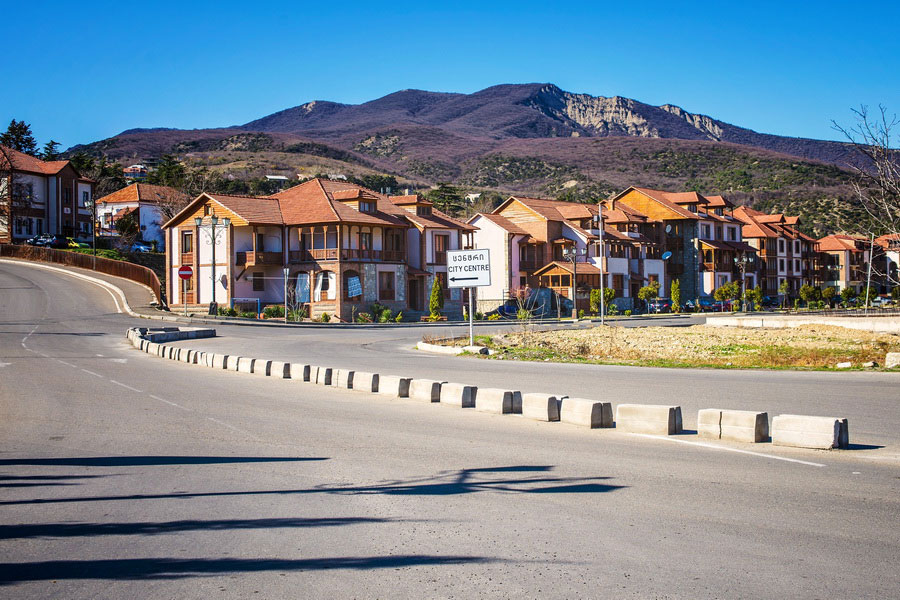
The ruins of Bebris Tsikhe (Elder’s Fortress) make for an ideal excursion just a short distance from Samtavro convent. The vantage overlooking the river valley has some of the best views of Mtskheta.
The abandoned Armaztsikhe Fortress dates to the 3rd century BCE and was originally a center of cult worship of the supreme god Armazi. The fortress is located just outside Mtskheta and features a nearby acropolis from the 1st century BC.
Shio-Mgvime monastery is located approximately 10 km from Mtskheta on the Mtkvari River. This monastic complex was founded in the 6th century by an Assyrian hermit monk named Shio. Shio-Mgvime quickly became Georgia’s largest monastery housing 2000 cloisterers.
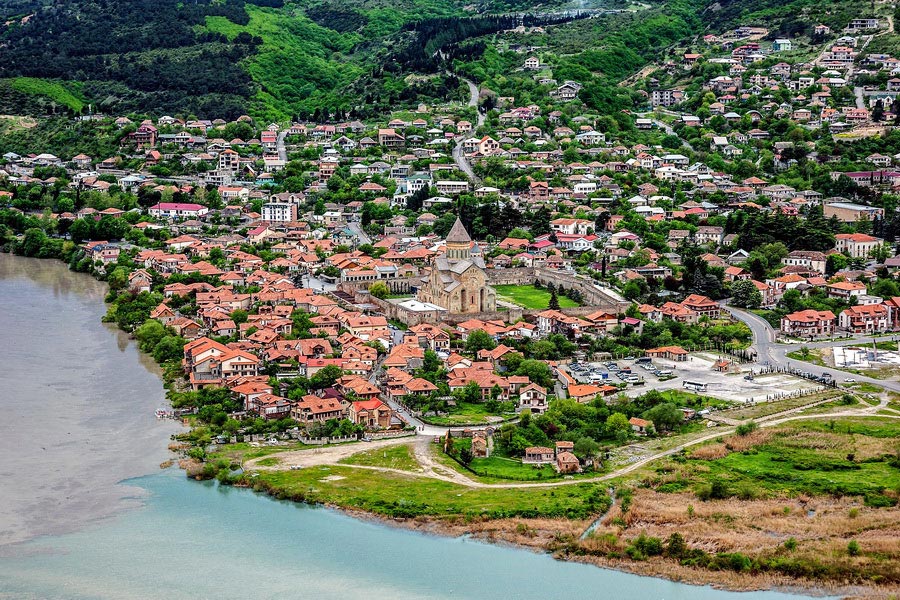
The octagonal domed church of Saint John the Baptist dates to around 570 CE. The complex also features a basilica named in honor of the Mother of God which was constructed by order of the famous David the Builder in the 12th century. Destroyed by a Safavid invasion in 1615, the basilica was restored decades later. A refectory was added sometime before the 17th century. Several meters away is a free standing 12th century chapel showcasing religious murals of the eponymous saint.
Cuisine
There are over 20 restaurants, cafes and beer gardens in Mtskheta, most of which serve high quality Georgian food and drink for surprisingly affordable prices. Many have sprawling outdoor dining areas to accommodate any size party. These restaurants are favorite supra spots for locals and visitors from Tbilisi.
Salobie restaurant is an authentic Georgian gastronomic institution which is famous for their Mtskheta style lobio (bean soup).
Getting in & around
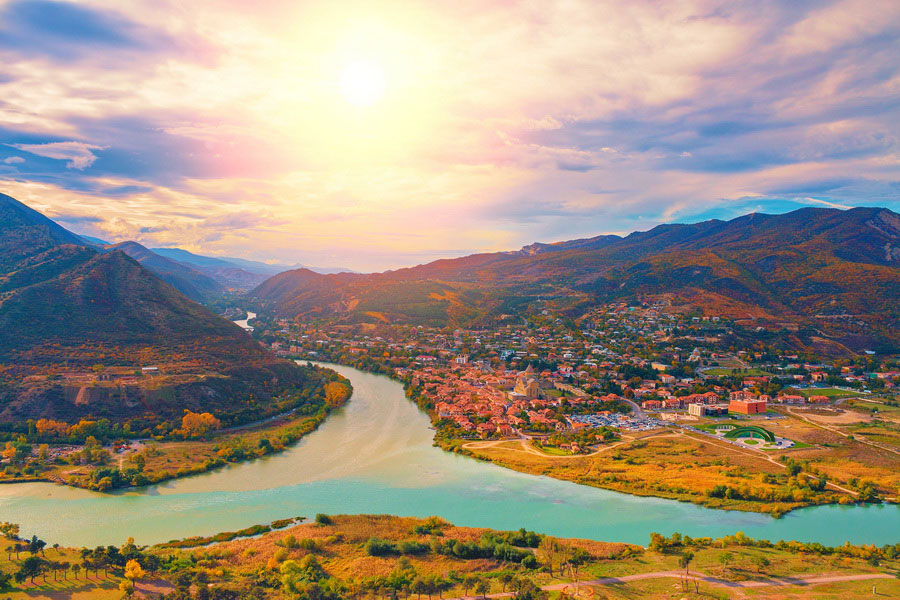
Mtskheta is only a 15 minute drive from Tbilisi so taxi is the most convenient means of transfer but should be reserved by phone for the most affordable rates. Marshrutkas depart from Didube station several times per day but schedules may vary.
Most of Mtskheta’s attractions can be reached afoot. Bicycle rental is available in the center near the souvenir bazaar in front of the main cathedral. Taxis are cheap but not so easily hailed street side as in Tbilisi.


